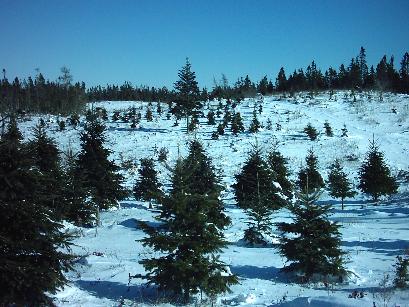
The Christmas trees not only survive, but thrive. The mystery behind it is decoded by a University of Utah study. It suggests that efficient microscopic valves let water flow through conifers about as easily as it flows through other trees.
John Sperry, a University of Utah biology professor who led the research team says that if conifers had not evolved easy-flow valves to make up for the short length of their water pipes or conduits, “it is doubtful they could hold their own with angiosperms [flowering trees] in today’s forests. It’s doubtful they would dominate whole regions of North America.” She explained —
The Plumbing System of Trees
Unlike in flowering threes, the numerous parallel “pipes” that carry water upward through the woody trunks of evergreen coniferous trees are single-celled conduits called “tracheids” and are only a few millimeters long (about one eighth of an inch).
The Structure of Water Valves in Trees
Sperry says the range of conduit diameters vary but overlap for conifers and flowering trees. The conduits or tracheids in conifers range from 10 to 50 microns (millionths of a meter) in diameter, while the conduits or vessels in flowering trees range from 15 to 110 microns.
Evolution Produces Two Ways to Water a Tree
Sperry explains that Conifers, which arose more than 280 million years ago, have primitive conduits that are short and inefficient and evolved in some of the oldest plants some 400 million years ago. But, flowering plants evolved at least 146 million years ago and retained inefficient valves that first appeared some 400 million years ago in ferns, cycads and other primitive plants.
Via: Science Daily

